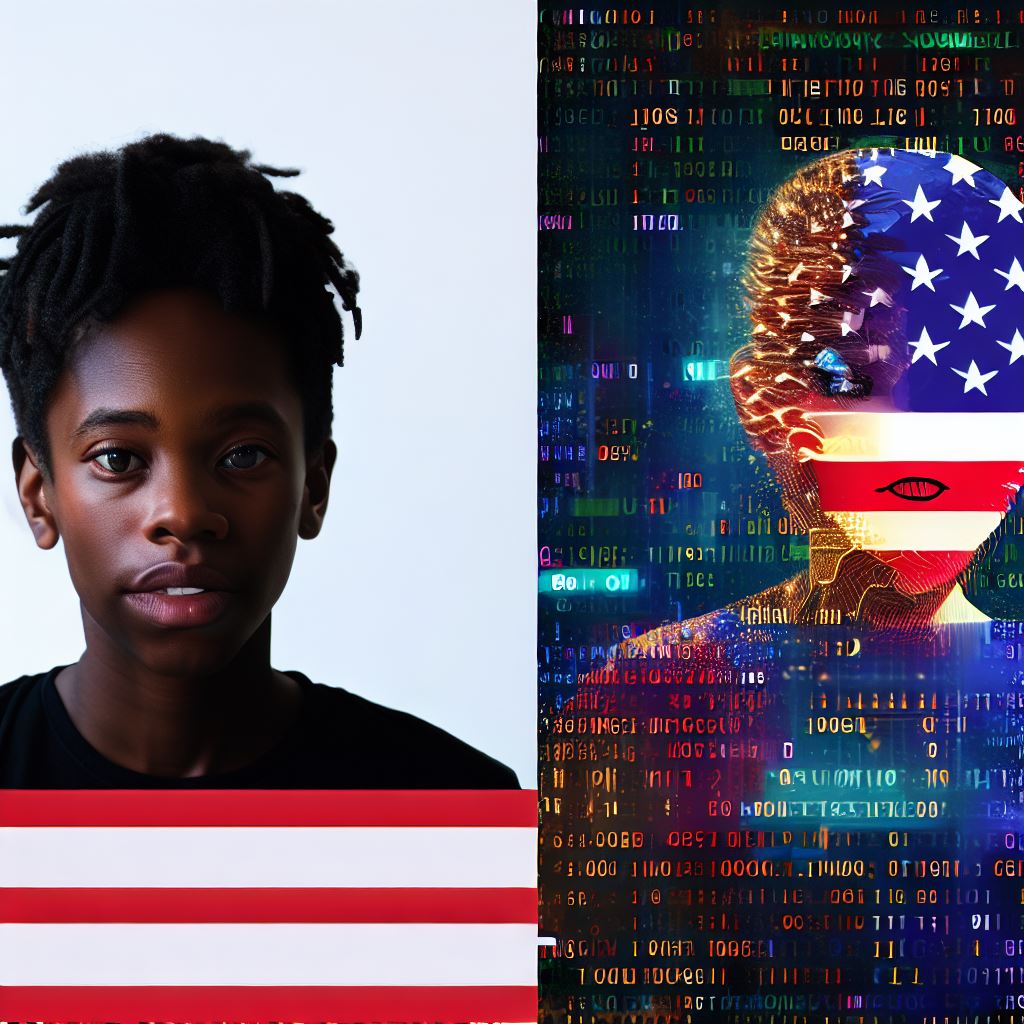Introduction
In today’s digital age, coding plays a crucial role in various aspects of our lives.
Coding refers to the process of creating instructions for computers to perform specific tasks.
This section aims to explore the question of whether coding can be considered a universal language.
Coding has become increasingly important in today’s digital age. From operating smartphones and computers to designing complex websites and applications, the ability to code is a valuable skill. Simply put, coding involves writing the instructions that tell a computer what to do.
Some argue coding principles apply universally, transcending languages, cultures, and societies. However, others claim language and culture create barriers.
Coding, in essence, allows individuals to communicate with machines through a set of predefined rules. It is a language that enables humans to express their intentions and commands to computers.
Supporters of coding as a universal language argue that the fundamental logic and concepts can transcend geographical and cultural boundaries.
On the other hand, critics believe that the interpretation of code may vary depending on the cultural context. Language nuances and cultural differences may affect the way code is perceived and implemented.
Furthermore, the diversity of programming languages and frameworks adds complexity to the question of universality.
In essence, while coding possesses characteristics of a language and its principles can be applied universally, the question of its true universality remains debated.
Understanding coding as a global language requires acknowledging both its potential as a universal medium of communication and the challenges posed by language and cultural barriers.
The following sections will delve deeper into this topic and explore its implications across different regions and societies.
Read: 10 Common HTML Mistakes and How to Avoid Them
Coding as a Language
Characteristics of a language:
- Has a set of rules and syntax that determine how it is structured and understood.
- Allows communication and expression of ideas, concepts, and instructions.
- Exists in both spoken and written forms.
- Is used by a community or group for interaction and understanding.
- Evolves and adapts over time based on the needs of its users.
Similarities between coding and spoken languages:
- Both coding and spoken languages have their own vocabulary and grammar rules.
- They can be used to convey ideas and instructions to others.
- Both coding and spoken languages require practice and understanding to become fluent.
- They are used to solve problems and express creativity.
- They can be used for communication and collaboration among individuals.
Differences between coding and spoken languages:
- Coding languages are more precise and less ambiguous than spoken languages.
- Coding languages are designed to interact with machines and computers.
- Spoken languages have regional and cultural variations, while coding languages are universal.
- Coding languages rely on logic and mathematical principles.
- Spoken languages can convey emotions and nuances that coding languages cannot.
Coding can be seen as a language with its own set of rules and syntax. It allows individuals to communicate and express their ideas, concepts, and instructions.
Similar to spoken languages, coding languages have their own vocabulary and grammar rules. They are used to convey ideas and instructions to others and require practice and understanding to become fluent.
However, there are also significant differences between coding and spoken languages. Coding languages are more precise and less ambiguous than spoken languages.
They are designed to interact with machines and computers, while spoken languages are used for human communication. Coding languages are universal, while spoken languages have regional and cultural variations.
In addition, coding languages rely heavily on logic and mathematical principles. They are used to solve problems and create programs that perform specific tasks.
Tech Consulting Tailored to Your Coding Journey
Get expert guidance in coding with a personalized consultation. Receive unique, actionable insights delivered in 1-3 business days.
Get StartedOn the other hand, spoken languages have the ability to convey emotions and nuances that coding languages cannot. Through spoken languages, individuals can express their feelings and connect with others on a deeper and more personal level.
Coding unifies diverse individuals, fostering global communication and collaboration despite cultural and linguistic disparities. In our digital era, it emerges as a vital, borderless skill.
Coding, akin to spoken languages, follows rules, facilitating interaction. However, distinctions exist, including precision and emotional conveyance. Nevertheless, it serves as a universal language, uniting people to innovate and shape the future.
Read: Behind the Screens: A Day in the Life of a USA-based Coding Ninja

Global Perspective
Coding as a tool for communication
- Coding acts as a bridge between different cultures, allowing people to communicate through a universal language.
- Coding facilitates international collaboration by enabling individuals from different countries to work together effectively.
Different coding languages around the world
- Various countries have their own popular coding languages, reflecting the diversity of coding practices globally.
- Linguistic diversity poses both challenges and opportunities for coding, requiring adaptability and innovative solutions.
Coding as a tool for communication
Coding serves as a powerful tool for communication, transcending language barriers and connecting cultures.
Regardless of one’s spoken language, coding provides a common ground for individuals to express their ideas and understanding of the world.
Coding acts as a bridge between different cultures, creating a shared platform for collaboration and communication.
Through coding, people can convey complex concepts and exchange information without relying solely on spoken language.
This universal language enables individuals from different backgrounds to work together seamlessly, fostering global collaboration.
Coding as a bridge between different cultures
Coding acts as a bridge, connecting individuals from diverse cultures and enabling them to understand each other.
By using a common coding language, people can collaborate on projects and share ideas regardless of their cultural differences.
This bridge breaks down barriers and promotes inclusivity, as the focus shifts from linguistic capabilities to problem-solving skills.
Coding allows people to appreciate and learn from each other’s cultural perspectives, enhancing global understanding and cooperation.
It promotes empathy and encourages individuals to work together towards a common goal, transcending boundaries and uniting the world.
Build Your Vision, Perfectly Tailored
Get a custom-built website or application that matches your vision and needs. Stand out from the crowd with a solution designed just for you—professional, scalable, and seamless.
Get StartedHow coding facilitates international collaboration
Coding plays a crucial role in facilitating international collaboration, bringing together talents from around the world.
Through coding, individuals can contribute to projects remotely, overcoming geographical limitations and time differences.
Collaboration becomes seamless as coding provides a standardized medium for communication and work synchronization.
Coding platforms and tools enable real-time collaboration, allowing teams to work together efficiently, regardless of their physical location.
International collaboration through coding unleashes the full potential of global talent, leading to innovative solutions and breakthrough advancements.
Different coding languages around the world
Coding languages are diverse and reflect the cultural backgrounds and preferences of different countries.
While some coding languages are internationally renowned, others are specific to certain regions or communities.
Various countries have developed their own popular coding languages to cater to their unique needs and programming practices.
For example, Python is widely used in the United States, while JavaScript dominates the web development scene globally.
India predominantly relies on languages like Java and C++, whereas Japan heavily favors Ruby and Perl.
Examples of popular coding languages in various countries
In Australia, Python and Java are extensively used, while Brazil favors Java and C# for software development.
China widely employs C++, while Germany relies on Python, C#, and Java for various applications.
Mexico predominantly uses Python and JavaScript, while Russia heavily relies on C++ and C#.
Thailand is known for its widespread usage of PHP, and the United Kingdom finds Python and JavaScript indispensable.
Optimize Your Profile, Get Noticed
Make your resume and LinkedIn stand out to employers with a profile that highlights your technical skills and project experience. Elevate your career with a polished and professional presence.
Get NoticedThese examples illustrate the prevalence of different coding languages across the globe, reflecting regional preferences and requirements.
Challenges and opportunities arising from linguistic diversity
Linguistic diversity presents both challenges and opportunities in the world of coding.
While it enhances creativity and innovation by bringing diverse perspectives, it can complicate communication and collaboration.
Translating code to different languages poses challenges, as nuances and contextual subtleties may be lost in the process.
However, linguistic diversity in coding also presents opportunities for cross-cultural learning and adaptation.
Coding communities embrace diversity, promoting the development of localized versions of coding languages, and fostering inclusivity.
Efforts to create coding education in multiple languages empower individuals worldwide to participate in the digital revolution.
Coding serves as a universal language, bridging cultures and facilitating international collaboration.
With the diverse array of coding languages around the world, linguistic diversity in coding offers challenges and opportunities.
Embracing this global perspective, we can build inclusive coding communities and leverage the power of coding as a tool for communication and collaboration.
Read: The Ethical Considerations for Coding Ninjas in the American Tech Scene
Universal Concepts in Coding
Basic coding structures shared across languages
- Variables, loops, conditionals, and functions are fundamental elements in coding.
- Examples from various programming languages highlight the universality of these structures.
Algorithms as a common ground
- Algorithms are widely used in solving problems globally, irrespective of language barriers.
- Illustrations demonstrate how algorithms transcend linguistic differences in coding.
Coding has become a global phenomenon, connecting people from diverse linguistic backgrounds through a common language – the language of technology.
While spoken languages may vary across nations, coding is often considered a universal language that enables effective communication among programmers worldwide. In this section, we will explore the universal concepts in coding that go beyond linguistic boundaries.
Basic coding structures shared across languages:
When it comes to coding, some fundamental structures are shared across programming languages. These structures serve as the building blocks for writing code and are understood by developers regardless of their native language.
Variables, loops, conditionals, and functions are crucial elements that exist in various programming languages. These structures allow programmers to store and manipulate data, control the flow of execution, and create reusable code modules.
For instance, regardless of whether a programmer is coding in Python, JavaScript, or Java, they would encounter variables, loops, conditionals, and functions in their respective languages.
The syntax may differ, but the underlying concept remains the same. This consistency allows programmers to easily transition between programming languages and collaborate effectively, as they share a common understanding of these basic coding structures.
To further emphasize their universality, let’s consider some examples. In Python, a variable can be declared using the assignment operator (=), while in JavaScript, the same concept applies.
Similarly, loops such as for, while, and do-while are present in most programming languages and follow similar constructs. Conditional statements like if-else and switch are also prevalent across various languages.
Lastly, functions, which encapsulate a set of instructions, exist in almost every major programming language, allowing developers to write reusable code.
Algorithms as a common ground:
Another aspect of coding that transcends language barriers is the use of algorithms. An algorithm is a step-by-step procedure designed to solve a specific problem or accomplish a particular task.
The beauty of algorithms lies in their application, which extends beyond the boundaries of spoken languages.
Regardless of one’s native language, logic and problem-solving skills are universal. Algorithms provide a common ground for programmers worldwide to solve problems, irrespective of their linguistic backgrounds.
For example, the algorithm for finding the maximum value in an array is the same regardless of whether the code is written in Python, C++, or any other language.
This consistency in using algorithms allows programmers to understand and collaborate on solving problems efficiently.
To illustrate how algorithms transcend language barriers, consider the famous sorting algorithm, “Bubble Sort.”
Although the implementation code may differ in different languages, the core algorithm remains constant. Programmers from different cultural backgrounds can understand and contribute to enhancing the algorithm’s efficiency, even if they don’t speak the same language.
Basically, coding can indeed be considered a universal language due to the presence of basic coding structures shared across languages and the use of algorithms as a common ground.
Variables, loops, conditionals, and functions are universal concepts in coding, enabling effective communication between programmers worldwide.
Additionally, algorithms provide a standardized approach to problem-solving, regardless of linguistic differences. The universal nature of coding allows programmers to collaborate, share knowledge, and create impactful technological solutions on a global scale.
Read: Post-Bootcamp: Maximizing Your Coding Dojo Experience
Challenges and Limitations
Language-specific syntax and conventions
- Non-English speakers face difficulties in coding due to language-specific syntax and conventions.
- Efforts have been made to address language barriers in coding through translation tools and localized coding platforms.
Cultural bias and context in coding
- Incorporating cultural considerations in coding practices is crucial for promoting inclusivity and avoiding bias.
- Cultural understanding plays a significant role in effective coding, ensuring contextually relevant and appropriate solutions.
Advantages of Coding as a Universal Language
Accessibility and Inclusivity
- Coding helps to bridge wealth and education gaps.
- It enables diverse individuals to communicate through code.
Fostering Innovation and Creativity
- Collaboration leads to the exchange of ideas globally.
- Coding amplifies technological advancements worldwide.
Coding has emerged as a universal language in the digital era, transcending geographical and cultural boundaries. By understanding its benefits, we can appreciate how it fosters accessibility and inclusivity while promoting innovation and creativity.
Accessibility and Inclusivity
Coding helps to bridge wealth and education gaps:
In many regions, access to quality education and technology remains limited due to economic disparities. However, coding presents a unique opportunity for individuals to overcome these barriers.
By learning how to code, individuals can gain valuable skills that open doors to various career paths, including those in the technology industry. This can level the playing field and bridge the wealth and education gaps that exist between different socio-economic groups.
It enables diverse individuals to communicate through code:
Unlike natural languages bound by linguistic constraints, coding offers a universal means of communication that transcends language barriers.
Regardless of their native tongue, individuals can write and understand code, facilitating cross-cultural collaboration.
This inclusivity empowers people from diverse backgrounds to come together, share ideas, and work towards common goals in the digital space.
Fostering Innovation and Creativity
Collaboration leads to the exchange of ideas globally:
Coding as a universal language encourages collaboration on a global scale. By having a shared language, developers and innovators from different parts of the world can easily collaborate, contribute, and build upon each other’s work.
This exchange of ideas fuels innovation and allows for the development of new solutions to global challenges. The collective intelligence harnessed through coding generates diverse perspectives and accelerates problem-solving.
Coding amplifies technological advancements worldwide:
The widespread adoption of coding as a universal language has immensely contributed to the acceleration of technological advancements around the world.
Whether it’s the development of cutting-edge applications or the refinement of existing systems, coding serves as a catalyst for progress.
With a shared language, developers and engineers can leverage each other’s work, build on top of existing frameworks, and drive the continuous evolution of technology.
Coding serves as a universal language with numerous advantages in our increasingly interconnected world. By bridging wealth and education gaps, coding promotes accessibility and inclusivity, enabling individuals from diverse backgrounds to participate in the digital economy.
Moreover, it fosters innovation and creativity by facilitating global collaboration and amplifying technological advancements. As coding continues to grow in relevance, its universal nature will play a significant role in shaping a more inclusive and innovative future.
Conclusion
- In this blog post, we have explored the concept of coding as a universal language.
- Throughout the discussion, we have seen that coding does have elements of a universal language.
- However, it is important to recognize that coding is not yet fully universal.
- While coding does transcend national boundaries and allows for collaboration and communication globally,
- There are still barriers such as language differences, cultural variations, and accessibility issues.
- Despite these challenges, coding has the potential to become even more universal in the future.
- As technology continues to advance, coding languages and tools are becoming more intuitive and user-friendly.
- This could lead to greater adoption and integration of coding across different regions and demographics.
- The implications for the future of coding are vast and far-reaching.
- If coding does become a truly universal language, it could revolutionize industries, education systems, and economies worldwide.
- The global impact of coding can already be seen in the growth of the tech industry and the demand for skilled coders.
- As more countries and communities recognize the value of coding, there will be increased efforts to promote coding education and resources.
- Ultimately, coding has the power to connect people, bridge gaps, and create opportunities on a global scale.
- It is our responsibility to strive for inclusivity, accessibility, and equity in the world of coding.
- By embracing coding as a universal language, we can empower individuals and communities to participate in the digital age.
- Together, let us work towards a future where coding truly becomes a language that knows no boundaries.




